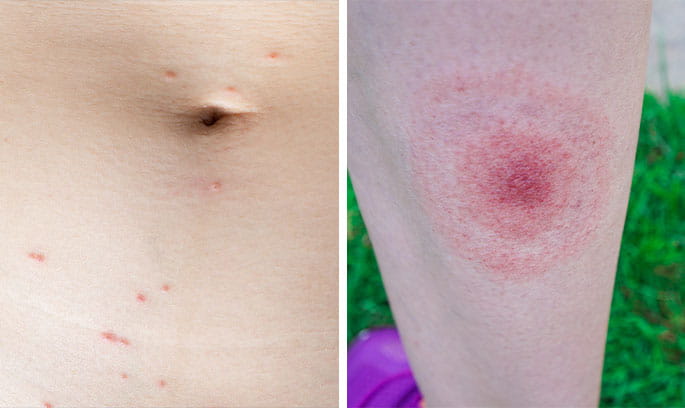Lyme disease is a bacterial infection caused by the bite of an infected blacklegged tick (also known as a deer or bear tick). Lyme disease can affect both people and animals. As the weather warms in spring, it’s your signal to be on guard for ticks and tick-borne illnesses. Lyme disease is the most common tickborne disease reported in Minnesota and in the United States.
Ways you can prevent a tick bite
If you spend time outdoors it’s important to know how to spot a tick bite, learn to safely remove a tick, and when to seek medical care for Lyme disease or other tick-borne illnesses. Peak tick season runs from May to October and if you spend any time outdoors, it’s wise to know how to spot a tick bite, know how to remove a tick safely, and when to seek medical care.
- Treat your clothing and outdoor gear with 0.5 percent permethrin.
- Use a tick repellent with at least 20 percent DEET.
- Walk in the center of marked trails.
- Wear a long-sleeved shirt and pants when outdoors.
To learn more about tick prevention, head to 7 tips to keep you tick-free.
How to spot a tick bite
Every year, I see patients who are diagnosed with Lyme disease and other tick-borne illnesses. Many of them don’t recall being bitten by a deer tick as they are quite small, especially in the nymph or juvenile stage. Wood ticks are larger than deer ticks and do not cause Lyme disease or other tick related illnesses. It takes at least 24 hours for an attached deer tick to transmit the Lyme disease bacteria. If you spend time outdoors in tick habitat, my advice is to do a daily, full-body tick check.

How to remove a tick and treat a tick bite
It’s a good idea to take a shower or bath within a couple hours of returning home after you’ve been outside in tick habitat. Check your body carefully, especially in your hair, behind your ears, between your legs and behind your knees, all those spots that are not easily visible are great spots for ticks. Keep a small sealed container filled with rubbing alcohol and a tweezers ready in case you find a tick. An empty prescription bottle works well for this. If you do find a tick, use the tweezers or similar tool and:
- Grasp the tick as close to your skin as possible.
- Use steady pressure and pull straight up; try not to bend, twist or squeeze the tick.
- Place the tick in the alcohol filled container and close tightly.
- Clean the area thoroughly with soap and water.
- While the goal is to remove the entire tick, I don’t recommend digging into your skin to remove any remaining parts of the tick because this may lead to an open sore and increase your chance for a skin infection.
Identifying Lyme disease symptoms
A deer tick usually needs to be attached to you for 24 to 48 hours to transmit Lyme disease, but other illnesses can be transmitted more quickly. Initial symptoms of Lyme disease that start 3-30 days after a deer tick bite include:
- an unusual rash that is spreading and often looks like a “bullseye”
- fever and chills
- headache
- muscle and joint pain

Treatment for Lyme disease
Treatment for Lyme disease is usually done with a 2-3 week course of antibiotics and is generally very effective, especially when treatment is done early in the course of the illness. If you think you have symptoms caused by a deer tick bite you can get care quickly and virtually by contacting your doctor or through Allina Health Virtual Care.
A short, one-day antibiotic treatment might be called for to prevent Lyme disease after a deer tick bite if several criteria are met:
- The tick is identified as a blacklegged (deer) tick
- The tick was attached for at least 36 hours. If the tick you pulled off is engorged or puffed up with blood, then it was probably on this length of time.
- The treatment is started less than 72 hours after finding the attached tick.
- The treatment is only for adults and children 8 years or older.
Find more information about Lyme disease and other illnesses caused by deer ticks by visiting the Minnesota Department of Health website or the CDC website.








